Raviolo del plin ist eine typische piemontesische Version gefüllter Nudeln. Sie hat in der Regel eine Fleischfüllung und wird mit Bratensauce gewürzt. Die älteste Zubereitung ist “al fazzoletto”: Die Ravioli werden direkt in eine Serviette abgetropft und völlig trocken und abgetropft serviert. Dies erinnert an den Brauch, den Männern bei der Arbeit auf dem Feld das Mittagessen in einer Serviette zu bringen.
Der Name “Plin” bedeutet “Pizzicotto” und erinnert an die charakteristische Bewegung, mit der die Nudeln “gekniffen” werden, um die Ravioli zu schließen. Ich habe dieses Rezept aus dem Piemonte auf Cucchiaio d’Argento gefunden. Es nimmt teil an der Kulinarischen Weltreise von Volkermampft, die diesen Monat nach Italien reist.
Piemonte, vom Lateinischen, heisst „am Fuss der Berge“, (Pedemontium oder Pedemontis) und ist eine Region im Nordwesten Italiens, die an die Schweiz und Frankreich grenzt. Torino ist die Hauptstadt der Region, doch gehören auch bekannte Städte wie Vercelli, Novara, Asti und Cuneo dazu. Der Begriff „Piemont“ ist zum ersten Mal 1193 in einem Vertrag zwischen Asti und dem Marktgrafen von Saluzzo „Burgherr von Piemont“ erwähnt worden.
************
Raviolo ‘del plin’ is a typical Piedmontese version of stuffed pasta. It usually has a meat filling and is seasoned with gravy. The oldest preparation is ‘al fazzoletto’: The ravioli is drained directly into a napkin and served completely dry and drained. This recalls the custom of bringing lunch in a napkin to the men working in the fields.
The name “plin” means “pizzicotto” and recalls the characteristic movement of “pinching” the pasta to close the ravioli. I found this recipe from the Piedmont on Cucchiaio d’Argento. It’s taking part in the Culinary world travel of Volkermampft, this month we travel to Italy.
Piemonte, from Latin, means “at the foot of the mountains”, (Pedemontium or Pedemontis) and is a region in north-western Italy bordering Switzerland and France. Torino is the capital of the region, but it also includes well-known cities such as Vercelli, Novara, Asti and Cuneo. The term “Piedmont” was first mentioned in 1193 in a contract between Asti and the market count of Saluzzo “Burgrave of Piedmont”.
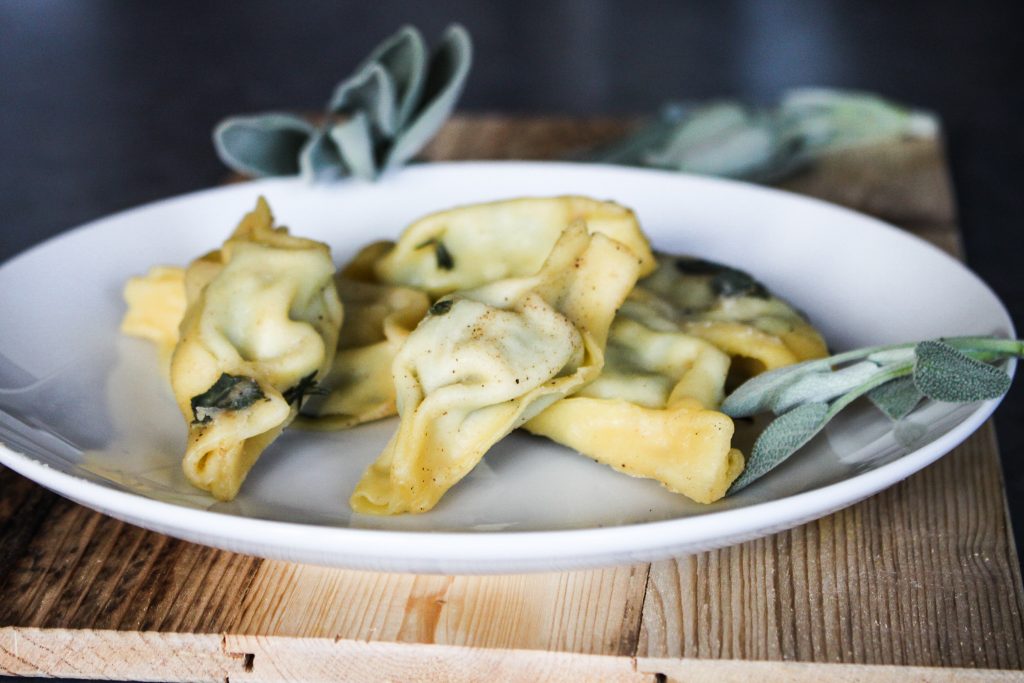
Pastateig nach diesem Rezept herstellen.
Für die Füllung (leicht abgewandelt):
500 g frischer Spinat
250 g Ricotta
50 g geriebener Parmesan
Salz und Pfeffer
Chili Pulver
Sauce:
40 g Butter
Ein paar Salbei Blätter zerrissen
1 Zweig Thymian
Geriebener Parmesan
Etwas Kochwasser
Den Spinat waschen und die Stiele entfernen. Dann in kochendem Wasser 2-3 Minuten kochen. Abschütten und leicht auskühlen lassen, dann hacken. Den Spinat danach sehr gut ausdrücken! Mit dem Ricotta und dem Käse mischen und gut würzen. Wer ihn ganz fein gehackt hat, kann ihn in einen Spritzbeutel füllen, ich habe 2 Kaffeelöffel zum Arbeiten genommen.
Den Pastateig bis und mit Stufe 5 ausrollen, die Bahnen sollen gleich breit sein, ca 8 cm breit. Mit 2 Kaffeelöffeln Füllung ausstechen und in 2 cm Abstand auf die obere Hälfte des Teiges legen. Mit einem Pinsel etwas Wasser zwischen die Füllungen und auf die untere Kante des Teiges geben. Nun den Teig von oben nach unten falten und zwischen den Füllungen andrücken. Erst dann die untere Kante andrücken, so dass die Luft entweichen kann. Mit dem Raviolirad die Ravioli trennen und nun jedes einzelne auf beiden Seiten zusammen klemmen.
Die Ravioli in gesalzenem, kochendem Wasser ca. 4 Minuten kochen. Unterdessen in einer weiten Pfanne die Butter schmelzen, die Salbei Blätter und den Thymian darin leicht anbraten, die Ravioli direkt in die Pfanne abschöpfen, dabei etwas des Kochwassers mitgeben und den Parmesan dazu geben. Ein paar Mal wenden und servieren.
************
Make the Pasta dough as described in this recipe
For the Filling (slightly adapted):
500 g fresh Spinach
250 g Ricotta
50 g grated Parmesan
Salt and Pepper
Chili Powder
Sauce:
40 g Butter
Some Sage leaves, torn
1 twig Thyme
Grated Parmesan
Some Pasta water
Wash the spinach and remove the stems. Then cook in boiling water for 2-3 minutes. Drain and leave to cool slightly, then chop. Squeeze the spinach very well, no water should remain! Mix with the ricotta and cheese and season well. If you chop it very finely, you can put it in a piping bag, I used 2 coffee spoons to work with.
Roll out the pasta dough up to and including level 5, the sheets should be the same width, about 8 cm wide. Using 2 coffee spoons, cut out filling and place 2 cm apart on the top half of the pasta dough. Use a brush to put some water between the fillings and on the bottom edge of the dough. Now fold the dough from top to bottom and press it between the fillings. Only then press on the bottom edge so that the air can escape. Separate the ravioli with the ravioli wheel and now clamp each one together on both sides.
Cook the ravioli in salted boiling water for about 4 minutes. Meanwhile, melt the butter in a wide pan, lightly fry the sage leaves and thyme in it, skim the ravioli directly into the pan, adding a little of the cooking water and the Parmesan. Turn a few times and serve.

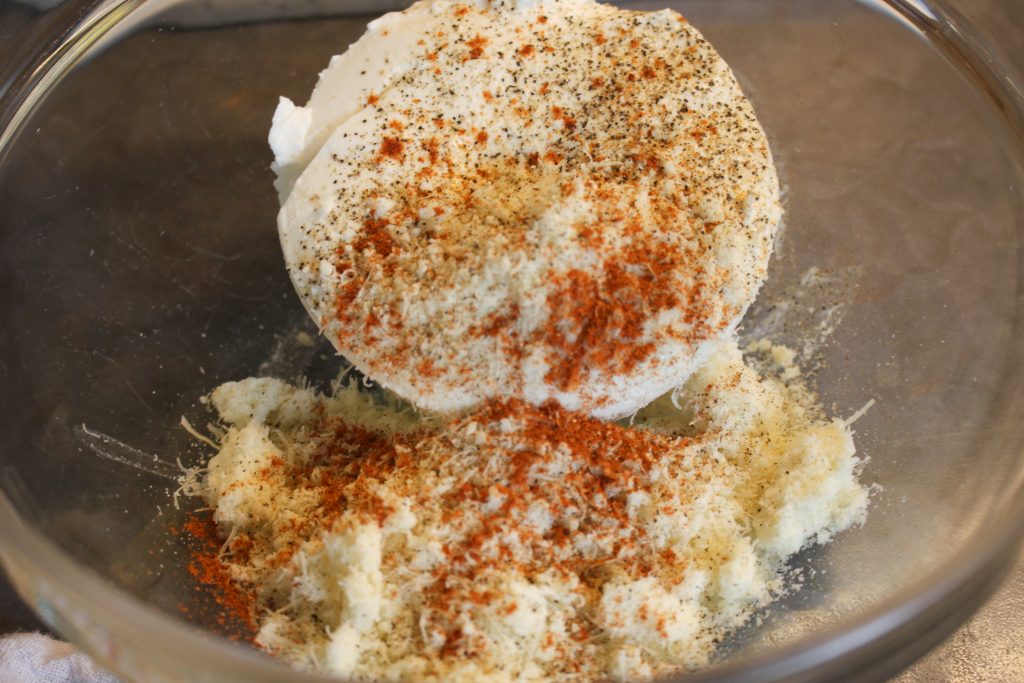
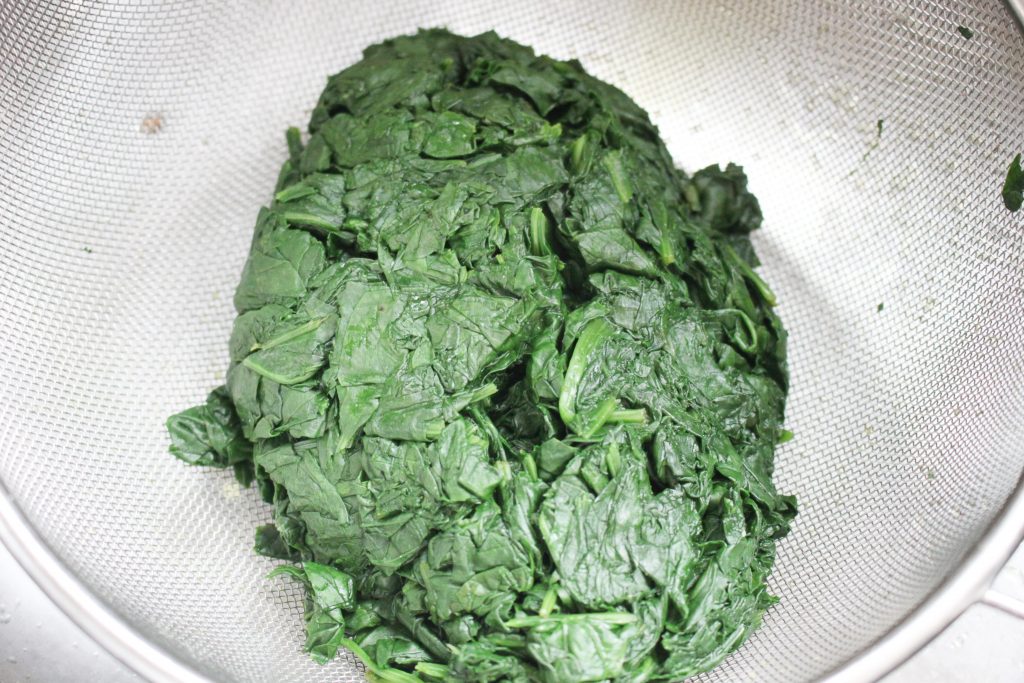
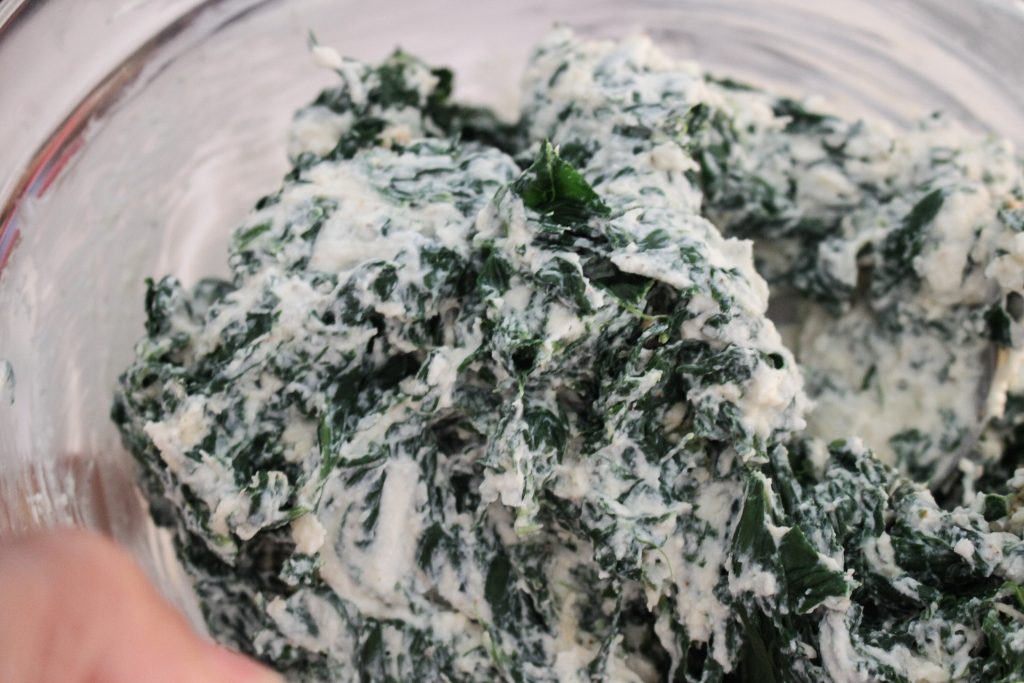
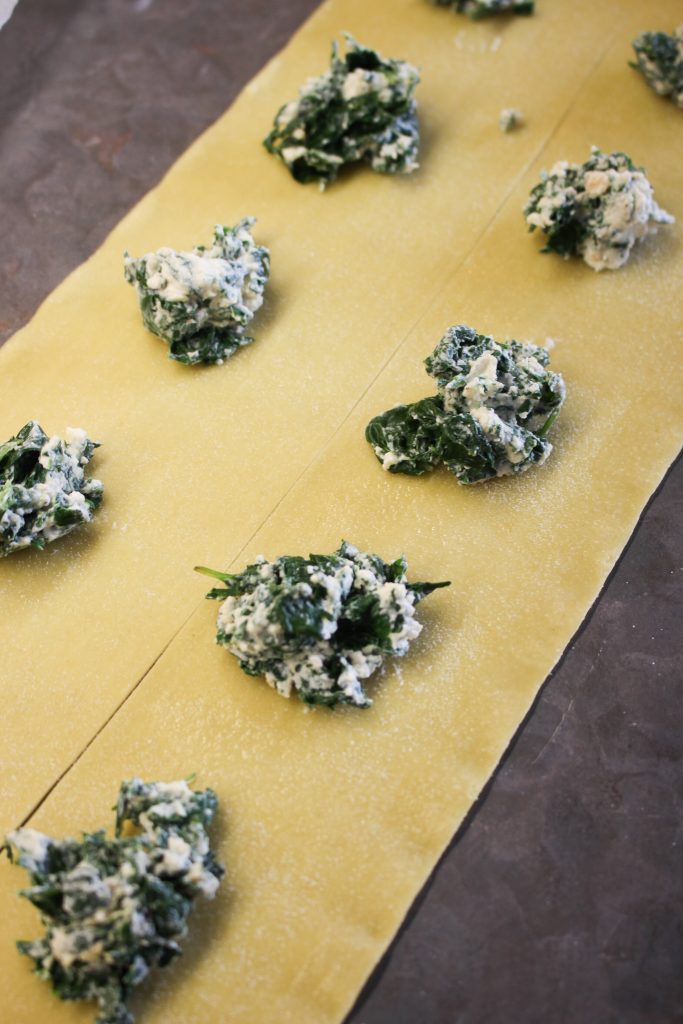
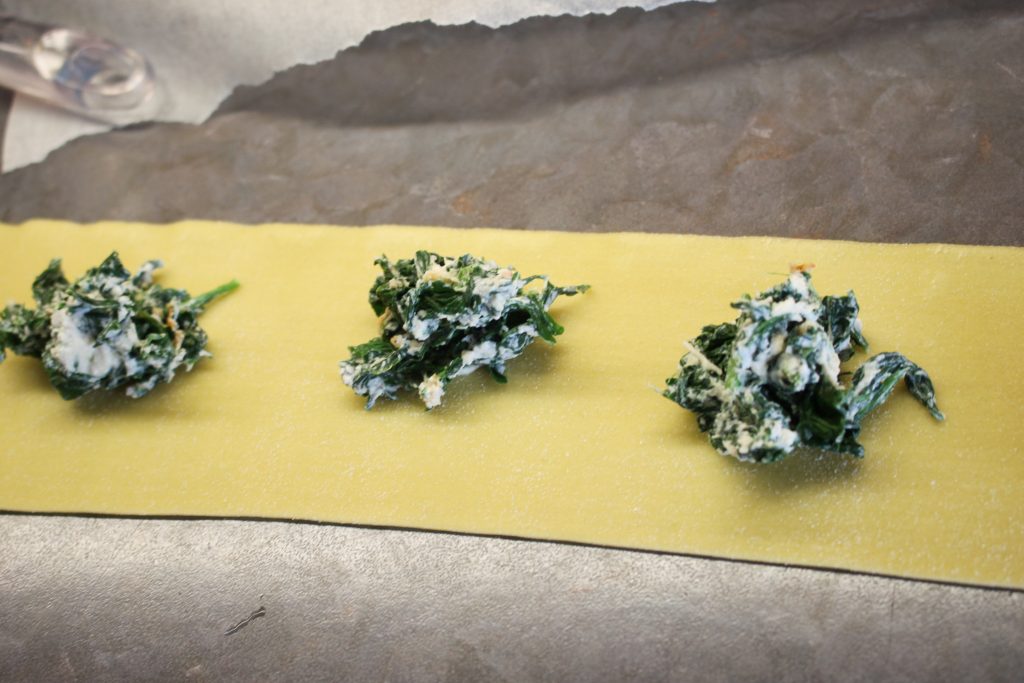
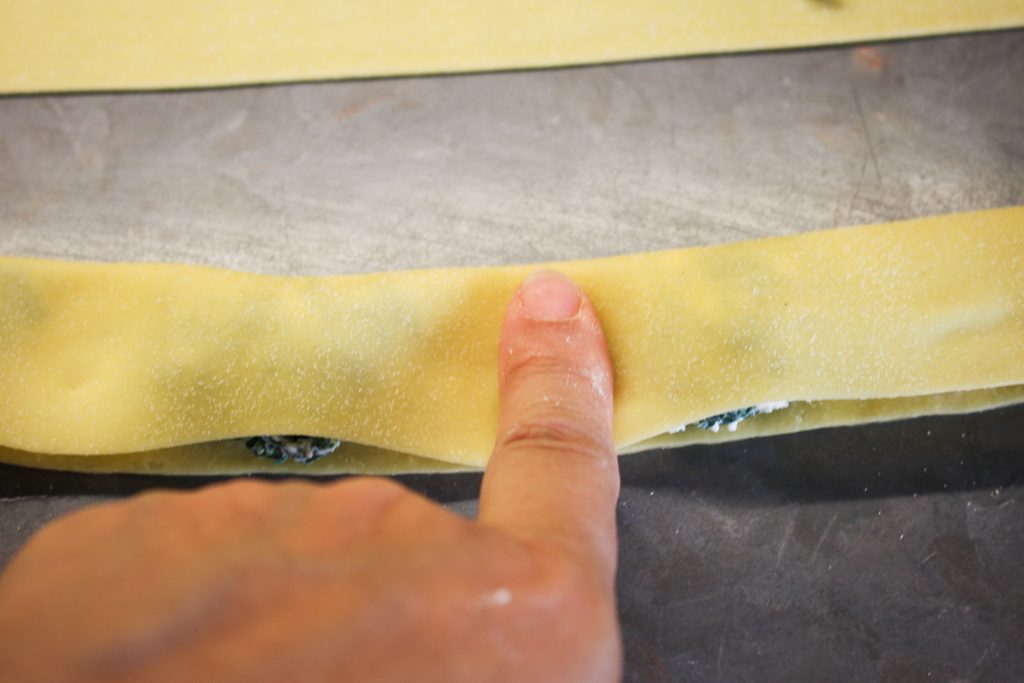
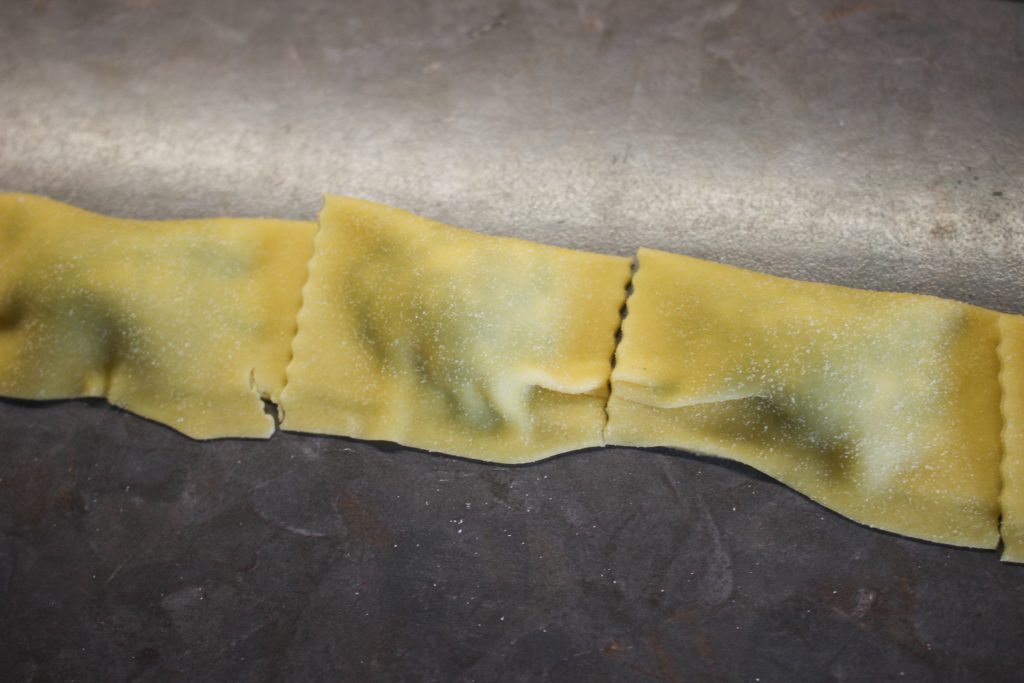
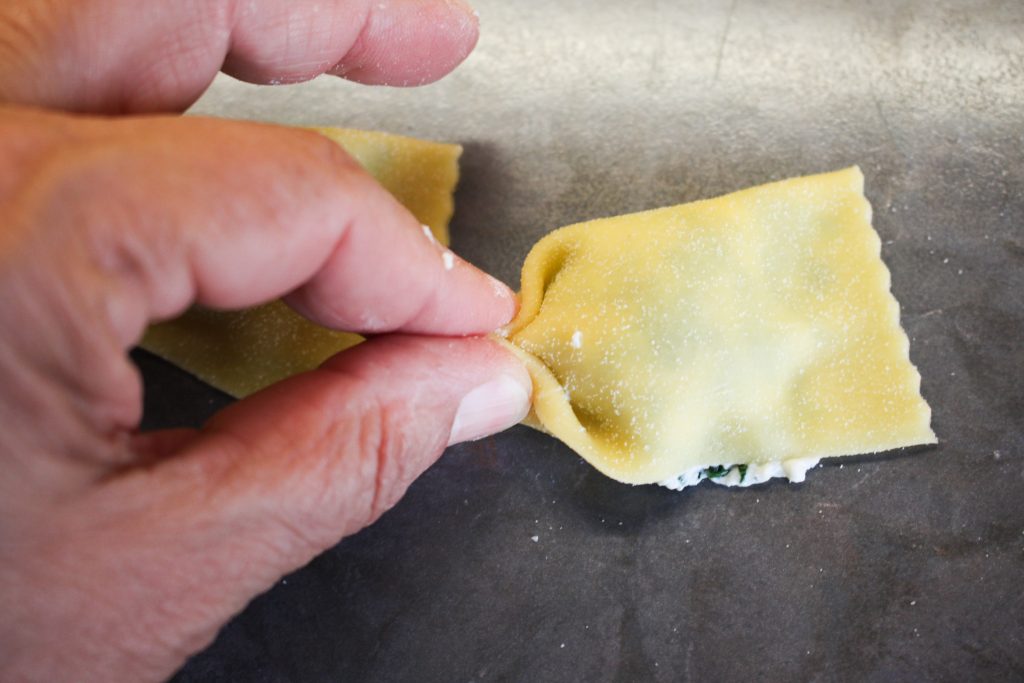
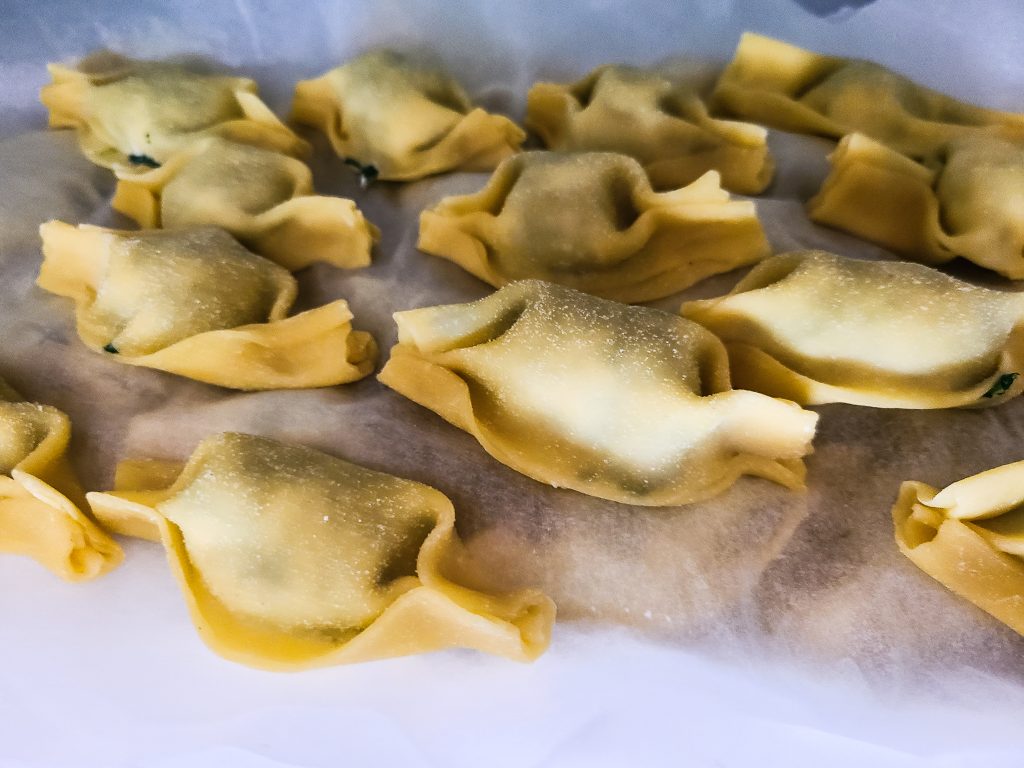
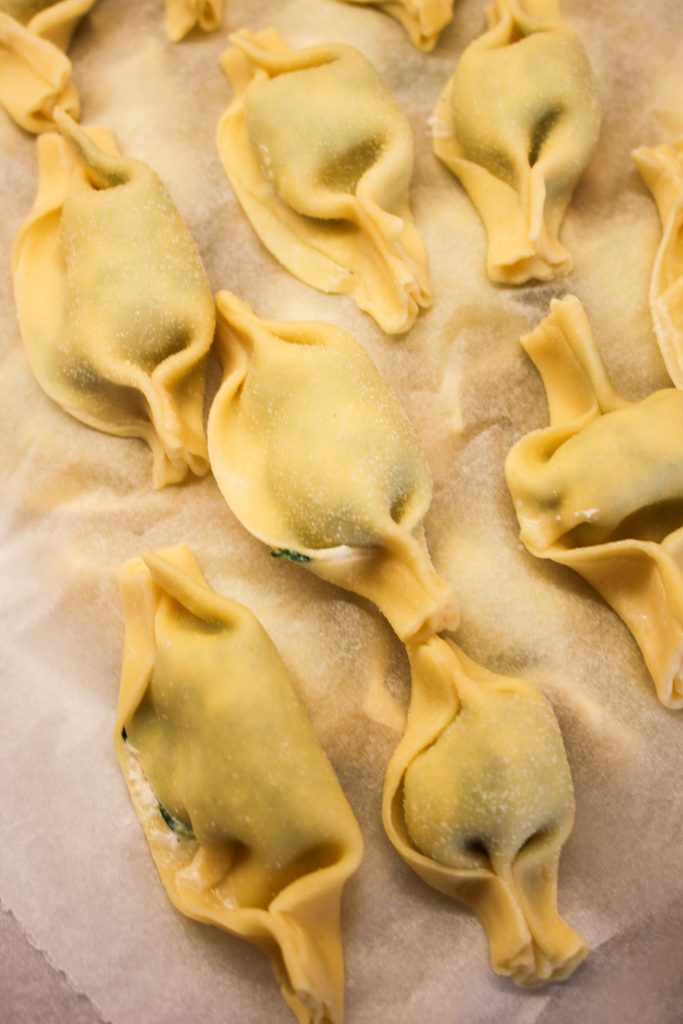
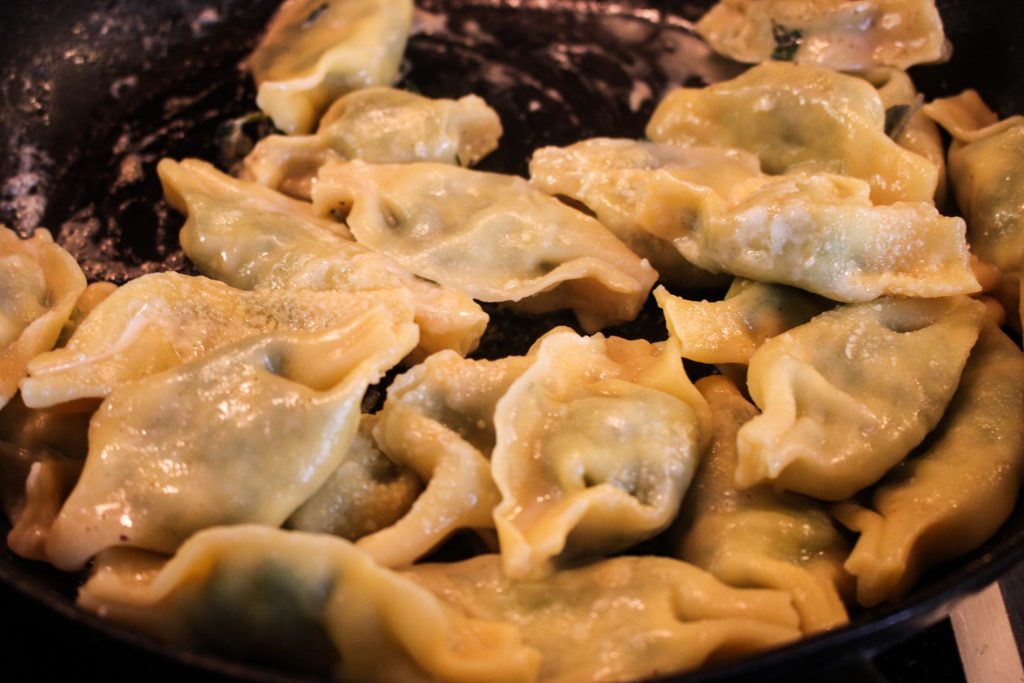
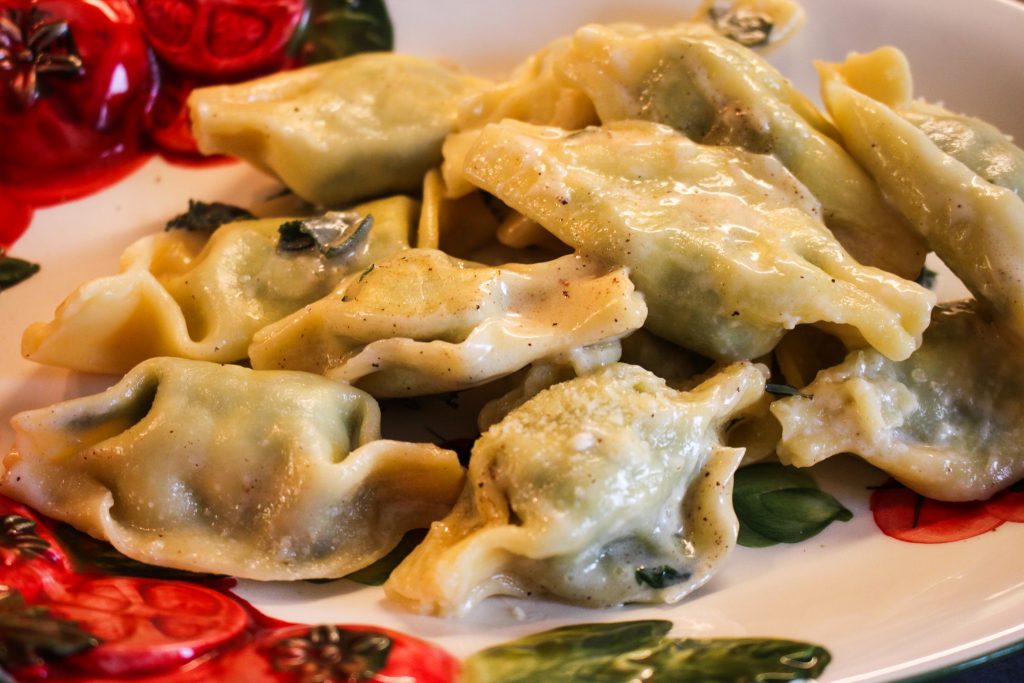

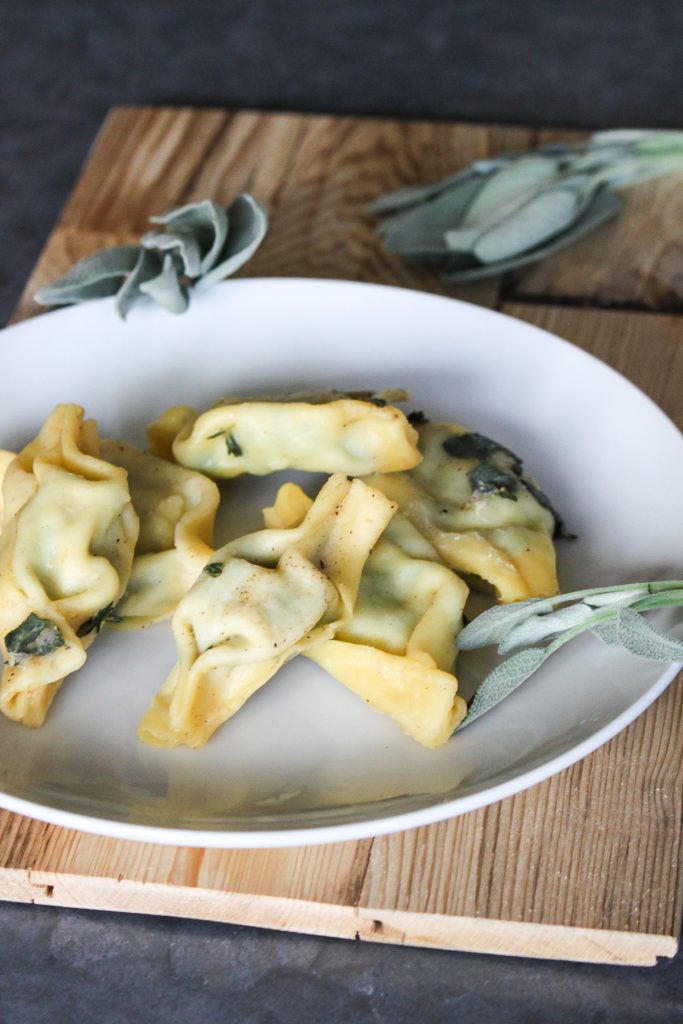
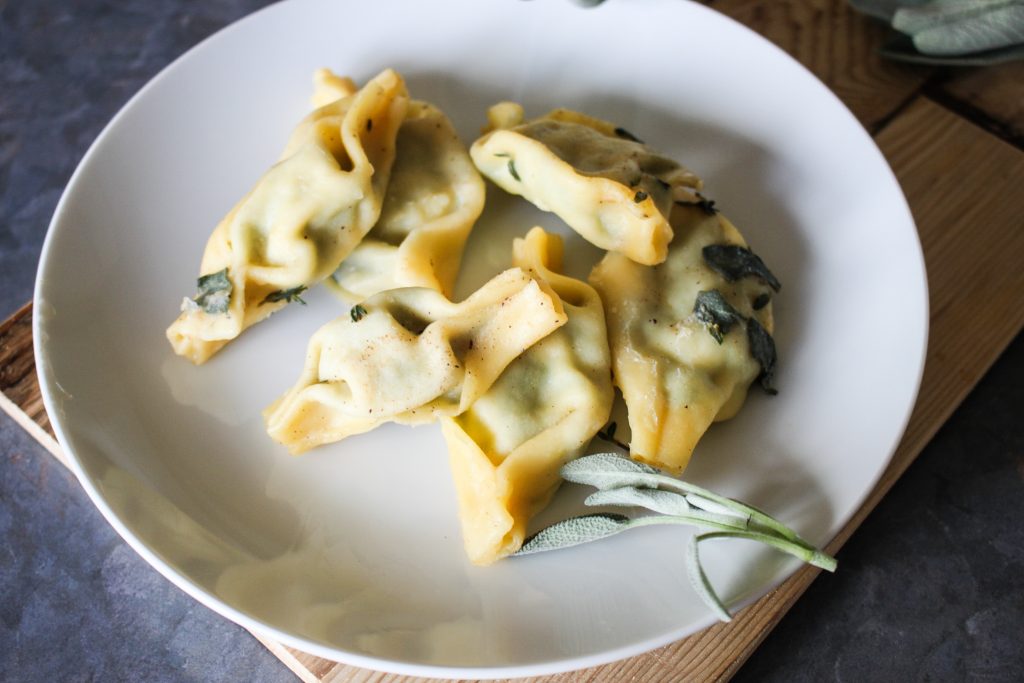
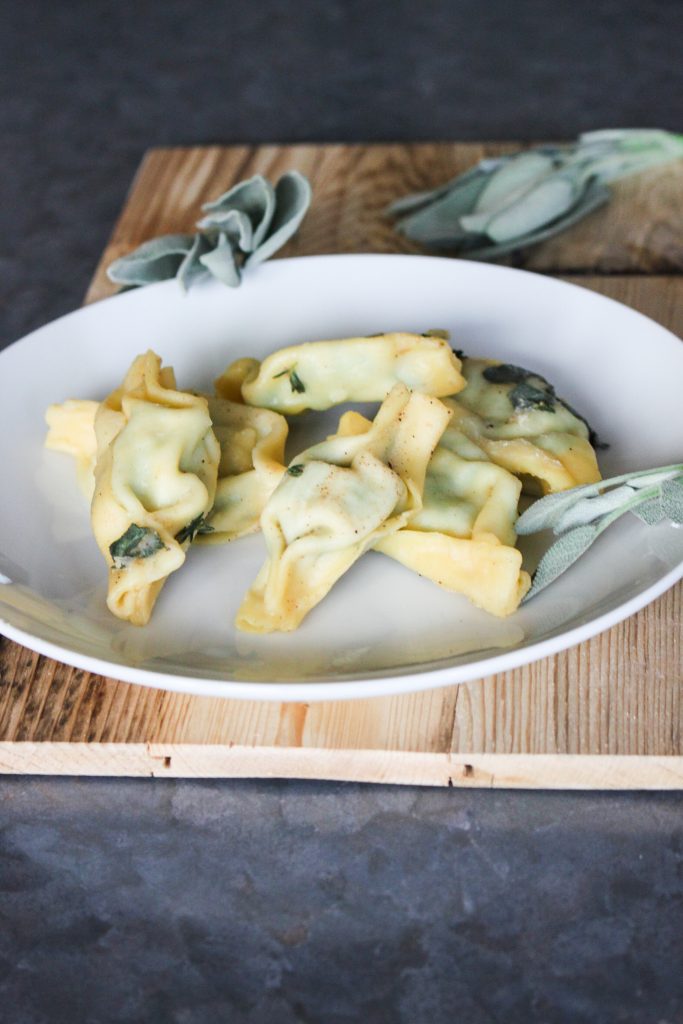
- Wilma von Pane-Bistecca mit Ravioli del Plin con Ricotta e Spinaci und Baci di Dama alla Nocciola und Pasta ‚Ncasciata und Polpettine alla Napoletana und Risotto agli Asparagi und Saltimbocca di Maiale
- Petra aka Cascabel von Chili und Ciabatta mit Lingua di Vitello con Salsa Verde – Kalbszunge mit grüner Sauce und Insalata di tacchino – Putensalat und Taralli dolci al Pistacchio – süße Taralli mit Pistazien
- Sylvia von Brotwein mit Spaghetti alla Puttanesca Rezept und Tagliata di Manzo – Steak vom Rind italienisch und Pizza Prosciutto – Schinken Pizza
- Susanne von magentratzerl mit Salsicce Capellacci auf Linsen-Salsicca-Gemüse und Focacchia veneziana
- Kathrina von Küchentraum & Purzelbaum mit Dreierlei Bruschetta
- Ute von Wiesengenuss mit Carbonara! Cucina povera
- Friederike von Fliederbaum mit Kürbispasta mit Radicchio
- Thomas und Simone von zimtkringel mit Zuppa di lenticchie e salsicce
- Sonja von fluffig & hart mit Klassische Bruschetta
- Regina von bistroglobal.de mit Moretum und Mostbrötchen und Altrömisches Dinner – die Hauptspeise und Nachspeise
- Michael von SalzigSüssLecker mit Orecchiette al Prangattato
- Britta von Backmaedchen 1967 mit Focaccia – italienisches Fladenbrot
- Nadja von Little Kitchen and more mit Homemade Tagliatelle mit Haselnuss-Basilikum Pesto
- Francesco (Gastblogger) auf Volkermampft mit Crostini al Tonno Scottato – Crostini mit gebratenem Thunfisch
- Volker von volkermampft mit Panuozzo Saltimboca – neapolitanisches Streetfood mal anders
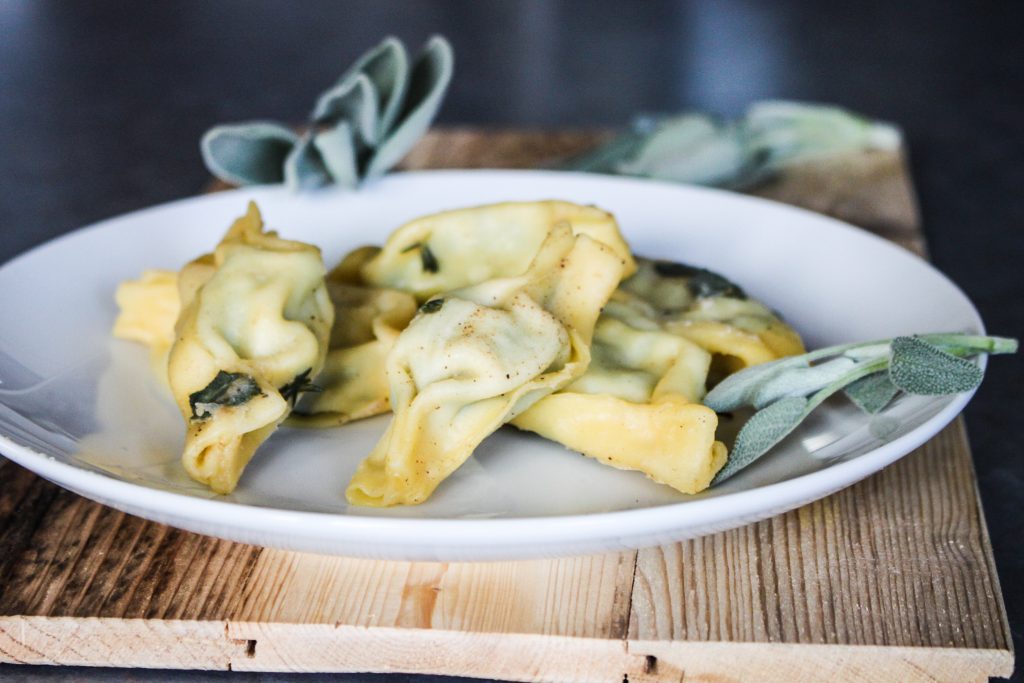





![Validate my RSS feed [Valid RSS]](https://pane-bistecca.com/wp-content/uploads/2024/05/valid-rss-rogers.png)